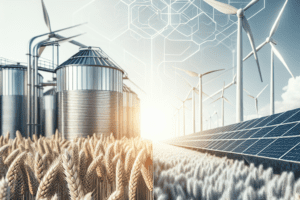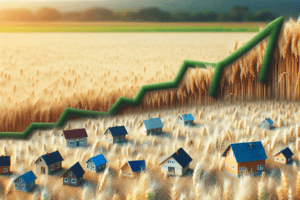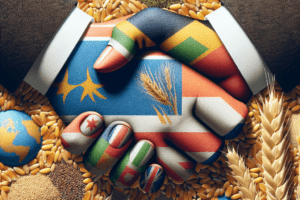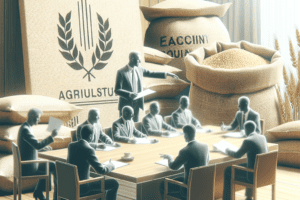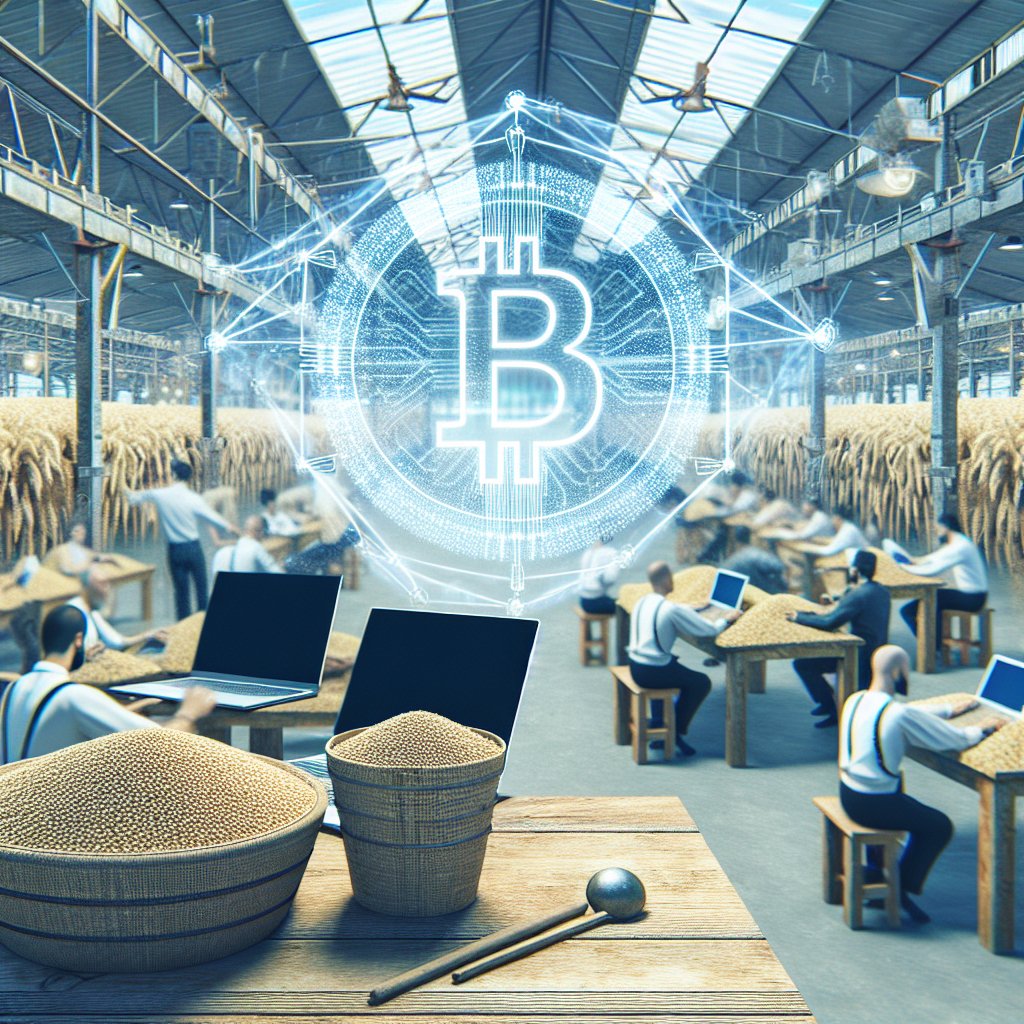The grain market is undergoing a significant transformation, driven by innovations such as blockchain technology and a growing demand for transparency. As the global population continues to rise, the need for efficient and reliable food supply chains has never been more critical. This article explores how blockchain is reshaping the grain industry, enhancing traceability, and fostering trust among stakeholders.
Understanding Blockchain Technology in the Grain Market
Blockchain technology, often associated with cryptocurrencies, is a decentralized digital ledger that records transactions across multiple computers. This technology ensures that the recorded data cannot be altered retroactively, providing a high level of security and transparency. In the context of the grain market, blockchain can revolutionize how transactions are conducted, tracked, and verified.
Enhancing Traceability
One of the most significant advantages of blockchain in the grain market is its ability to enhance traceability. Traceability refers to the ability to track the journey of a product from its origin to the end consumer. In the grain industry, this means being able to trace grains from the farm where they were grown, through processing and distribution, to the final point of sale.
With blockchain, each transaction involving grain can be recorded in a secure and immutable manner. This allows all stakeholders, including farmers, processors, distributors, and retailers, to access real-time information about the grain’s journey. For example, if a batch of grain is found to be contaminated, it can be traced back to its source quickly, allowing for swift action to be taken to protect consumers and mitigate the impact on the supply chain.
Building Trust Among Stakeholders
Trust is a crucial element in the grain market, where various stakeholders must collaborate to ensure a smooth supply chain. Blockchain technology fosters trust by providing a transparent and verifiable record of transactions. Each participant in the supply chain can verify the authenticity of the information recorded on the blockchain, reducing the risk of fraud and misrepresentation.
For instance, consumers are increasingly concerned about the origins of their food. With blockchain, they can access information about the grain they purchase, including details about the farm it came from, the methods used in its production, and any certifications it holds. This level of transparency not only builds consumer confidence but also encourages producers to adhere to higher standards of quality and sustainability.
Challenges and Opportunities in Implementing Blockchain
While the potential benefits of blockchain in the grain market are significant, there are also challenges to its implementation. Understanding these challenges is essential for stakeholders looking to adopt this technology effectively.
Technical and Infrastructure Barriers
One of the primary challenges in implementing blockchain technology in the grain market is the need for robust technical infrastructure. Many farmers and small-scale producers may lack the necessary resources or knowledge to adopt blockchain solutions. Additionally, the integration of blockchain with existing systems can be complex and costly.
To overcome these barriers, stakeholders must invest in education and training programs that equip farmers and producers with the skills needed to utilize blockchain technology. Furthermore, partnerships between technology providers and agricultural organizations can help facilitate the development of user-friendly solutions tailored to the needs of the grain industry.
Regulatory Considerations
The regulatory landscape surrounding blockchain technology is still evolving. Governments and regulatory bodies are working to establish guidelines that ensure the safe and effective use of blockchain in various industries, including agriculture. Stakeholders in the grain market must stay informed about these regulations and actively participate in discussions to shape policies that support innovation while ensuring food safety and consumer protection.
Case Studies: Successful Implementations of Blockchain in the Grain Market
Several companies and organizations have already begun to implement blockchain technology in the grain market, showcasing its potential to enhance transparency and efficiency.
Case Study 1: GrainChain
GrainChain is a blockchain-based platform that aims to streamline the grain supply chain by providing real-time tracking and payment solutions. The platform allows farmers to record their harvests on the blockchain, ensuring that all transactions are transparent and verifiable. By connecting farmers directly with buyers, GrainChain reduces the need for intermediaries, resulting in better prices for producers and lower costs for consumers.
Case Study 2: IBM Food Trust
IBM Food Trust is another notable example of blockchain technology in the agricultural sector. This platform enables participants in the food supply chain, including grain producers, to share data securely and transparently. By using IBM Food Trust, companies can trace the origin of their products, monitor quality, and respond quickly to any issues that arise. This initiative has gained traction among major food retailers and suppliers, demonstrating the growing acceptance of blockchain in the grain market.
The Future of Blockchain in the Grain Market
The future of blockchain technology in the grain market looks promising, with ongoing advancements and increasing adoption among stakeholders. As the demand for transparency and traceability continues to rise, blockchain will play a crucial role in shaping the future of the industry.
Integration with Other Technologies
As blockchain technology matures, its integration with other emerging technologies, such as the Internet of Things (IoT) and artificial intelligence (AI), will further enhance its capabilities. For example, IoT devices can collect real-time data on crop conditions, which can then be recorded on the blockchain. This integration will provide stakeholders with valuable insights into the supply chain, enabling them to make informed decisions and optimize operations.
Global Collaboration and Standardization
For blockchain to reach its full potential in the grain market, global collaboration and standardization will be essential. Stakeholders must work together to establish common protocols and frameworks that facilitate the sharing of data across borders. This collaboration will not only enhance transparency but also promote fair trade practices and sustainability in the grain industry.
Conclusion
Blockchain technology is poised to revolutionize the grain market by enhancing traceability, building trust among stakeholders, and streamlining supply chain processes. While challenges remain in its implementation, the opportunities it presents are significant. As the industry continues to evolve, embracing blockchain will be crucial for ensuring a sustainable and efficient food supply chain that meets the needs of a growing global population.


